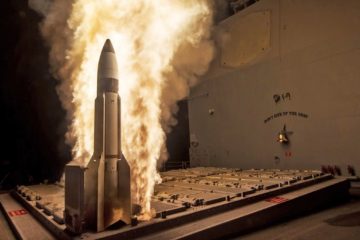The lead ship of the KDDX program is considered a key asset for the future ROK Navy. Therefore, the KDDX model from HHI boasts major new technologies and functions that the ROK Navy has never integrated into their combat vessels before. With a displacement of 9,000 tons (full load, 6,500 tons light displacement), the KDDX aims to become the first indigenous destroyer constructed entirely with domestic technologies, including the hull, combat systems, multifunction radar, and various weapon systems.
At MADEX 2023, HHI placed great emphasis on two major keywords for the KDDX: “system integration” and “technological advancement.” Powered by two gas-turbine generators and three diesel generators, the KDDX will be the first combat vessel in the ROK Navy to utilize a full electric propulsion system. This innovative propulsion system allows for the efficient allocation of electrical power, enabling flexible distribution to the ship’s weapon systems and sensors.

Furthermore, the KDDX is designed to adapt to future advancements in weaponry, such as lasers, which require significant amounts of energy. This forward-looking approach ensures that the KDDX is prepared to accommodate emerging systems applicable to naval battles of the future.
The KDDX is equipped with Hanwha Systems’ integrated mast (I-MAST), which features a “Dual-Band Multi-Function Radar.” This radar system consists of two radars operating simultaneously. The S-band radar is utilized for long-range air defense target and ballistic missile detection and tracking, while the X-band radar is employed for short-range air defense target and surface target detection and tracking. With the inclusion of the I-MAST and electric propulsion system, the KDDX aims to achieve reduced RCS (Radar Cross Section) and decreased underwater radiated noise, thereby enhancing its survivability against enemy submarines and radar detection.

In terms of weapon systems, the KDDX will be equipped with a Mk 45 5-inch main gun, two CIWS-II systems, eight anti-ship missiles (potentially the C-Star by LIG NEX 1), as well as KVLS-I and KVLS-II to accommodate the new naval version of the L-SAM (함대공유도탄-II). L-SAM will provide greater air defense and cruise missile interception capabilities to the fleet and if the Anti-Ballistic Missile (ABM) version of the naval L-SAM is developed, it would serve in intercepting ballistic missiles like the SM-3.
For anti-submarine warfare capabilities, the KDDX incorporates an integrated sonar system. This system includes a hull-mounted sonar at the bow, as well as a Multi-Function Towed Array (MFTA) and a Low-Frequency Projector Array (LFPA) at the rear. To enhance the integration of the new sonar system, HHI conducted studies on three hull forms: Wave-Piercing-Type, Vertical-Type, and Traditional-Type.

Over the course of MADEX exhibitions from 2019 to 2021, the hull shape transitioned from Wave-Piercing to Vertical, ultimately settling on the current traditional type with an improved sonar dome shape. This demonstrates HHI’s extensive research and development efforts invested in the KDDX model.

A total of six vessels are planned for construction and delivery by 2036. The basic design is scheduled to be completed by the end of the year. Detailed design and the start of construction on the lead ship is set to begin in 2024.
To learn more about the latest KDDX design, check out our video coverage of the HHI booth during MADEX 2023, including a in-depth presentation of the future destroyer:






